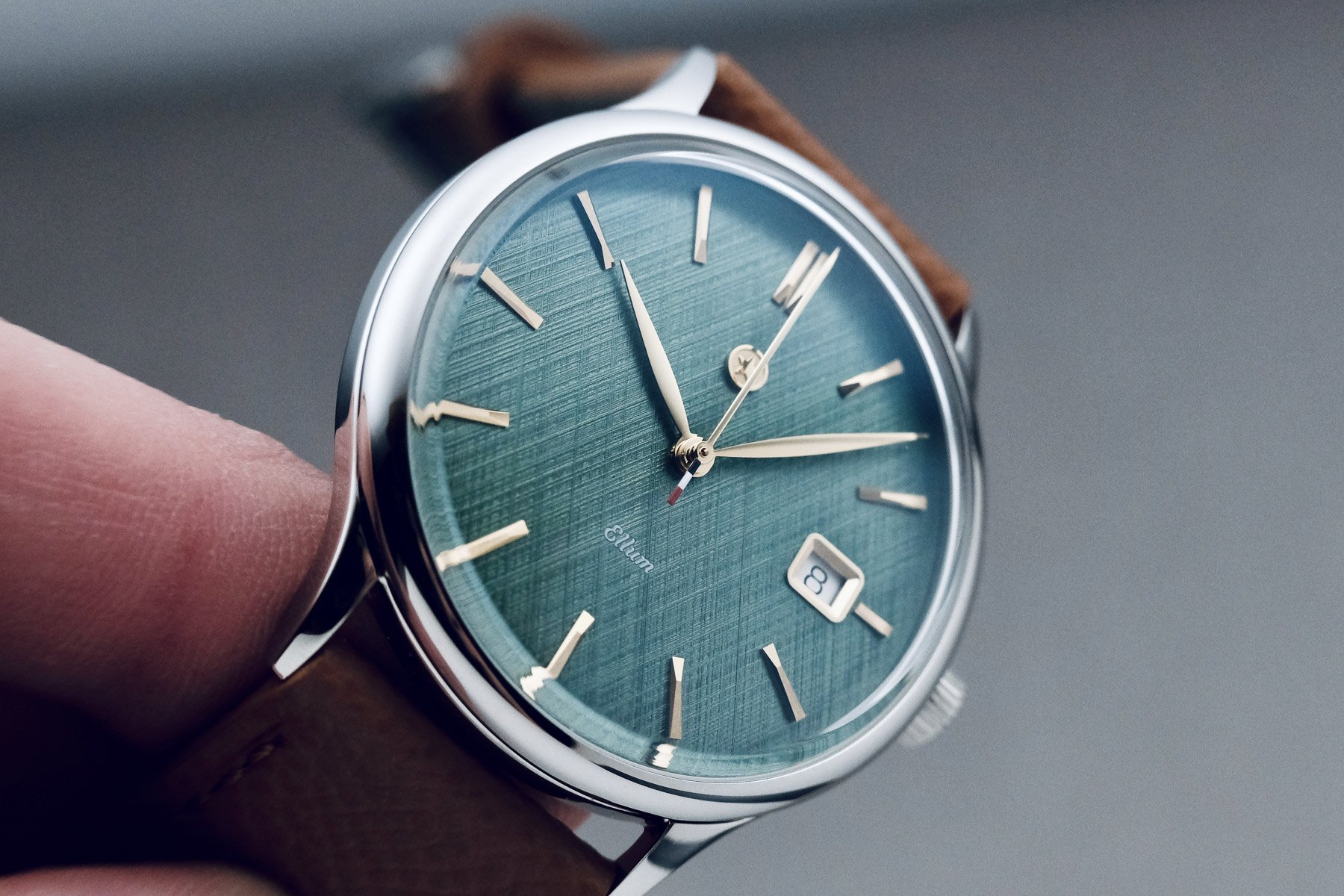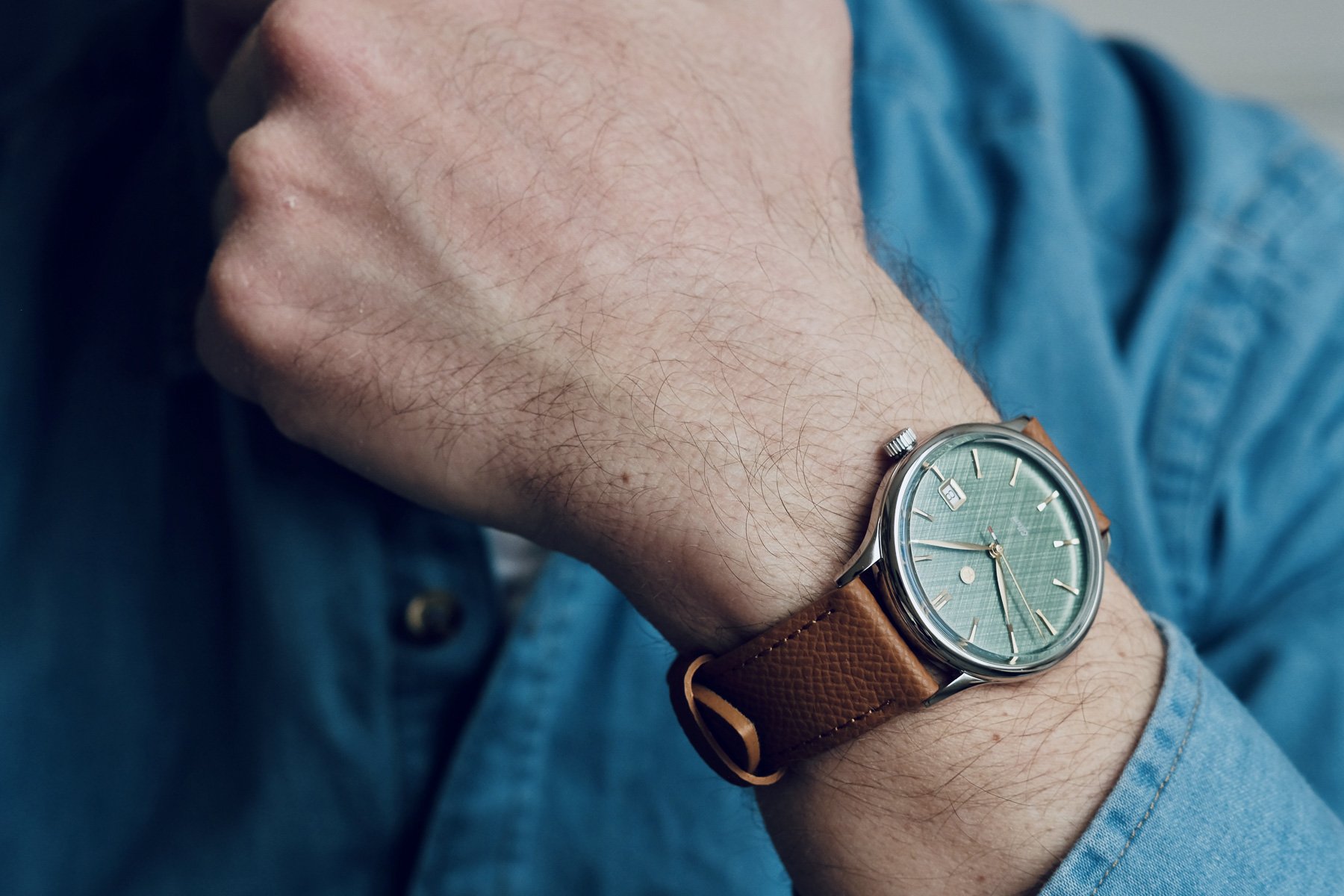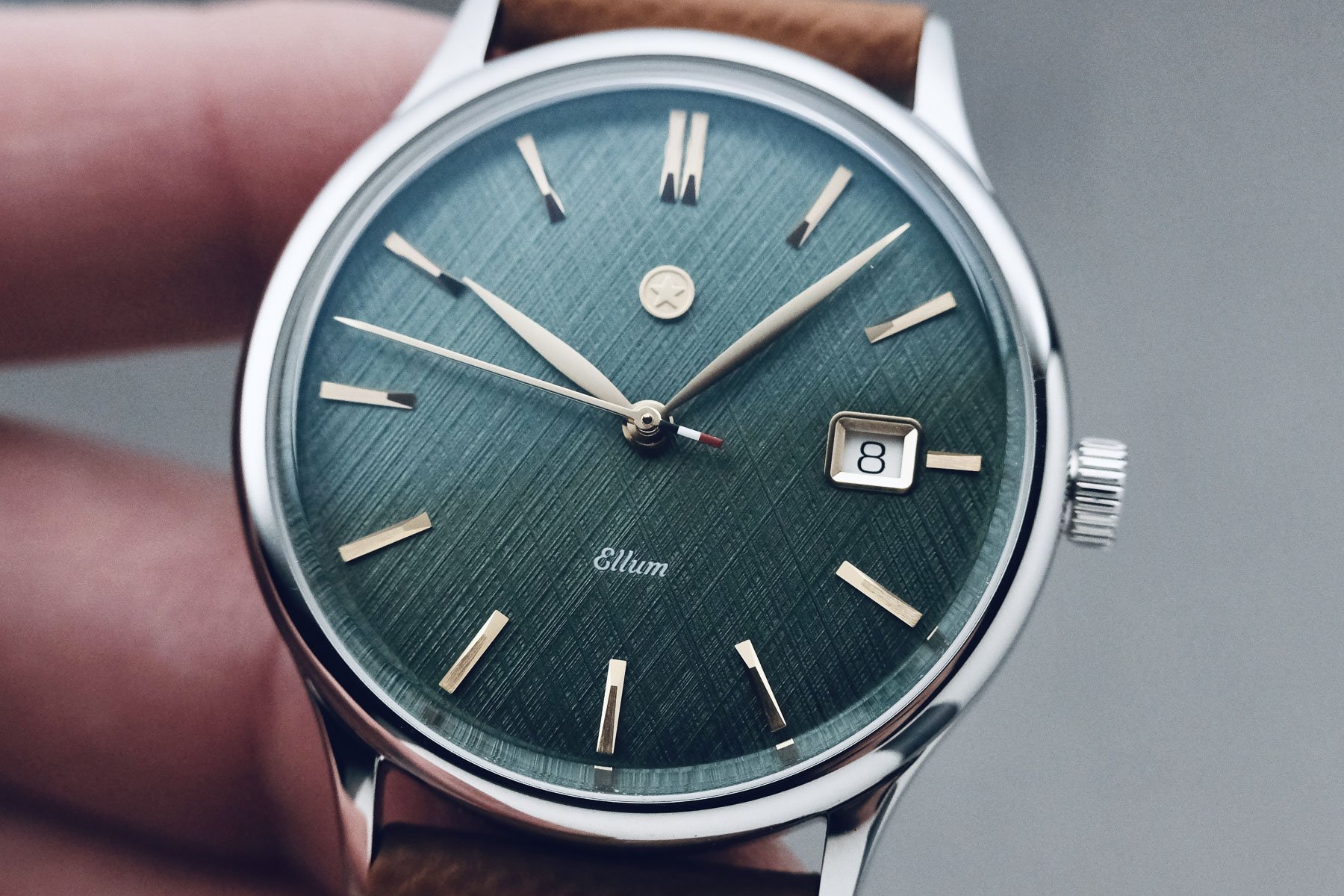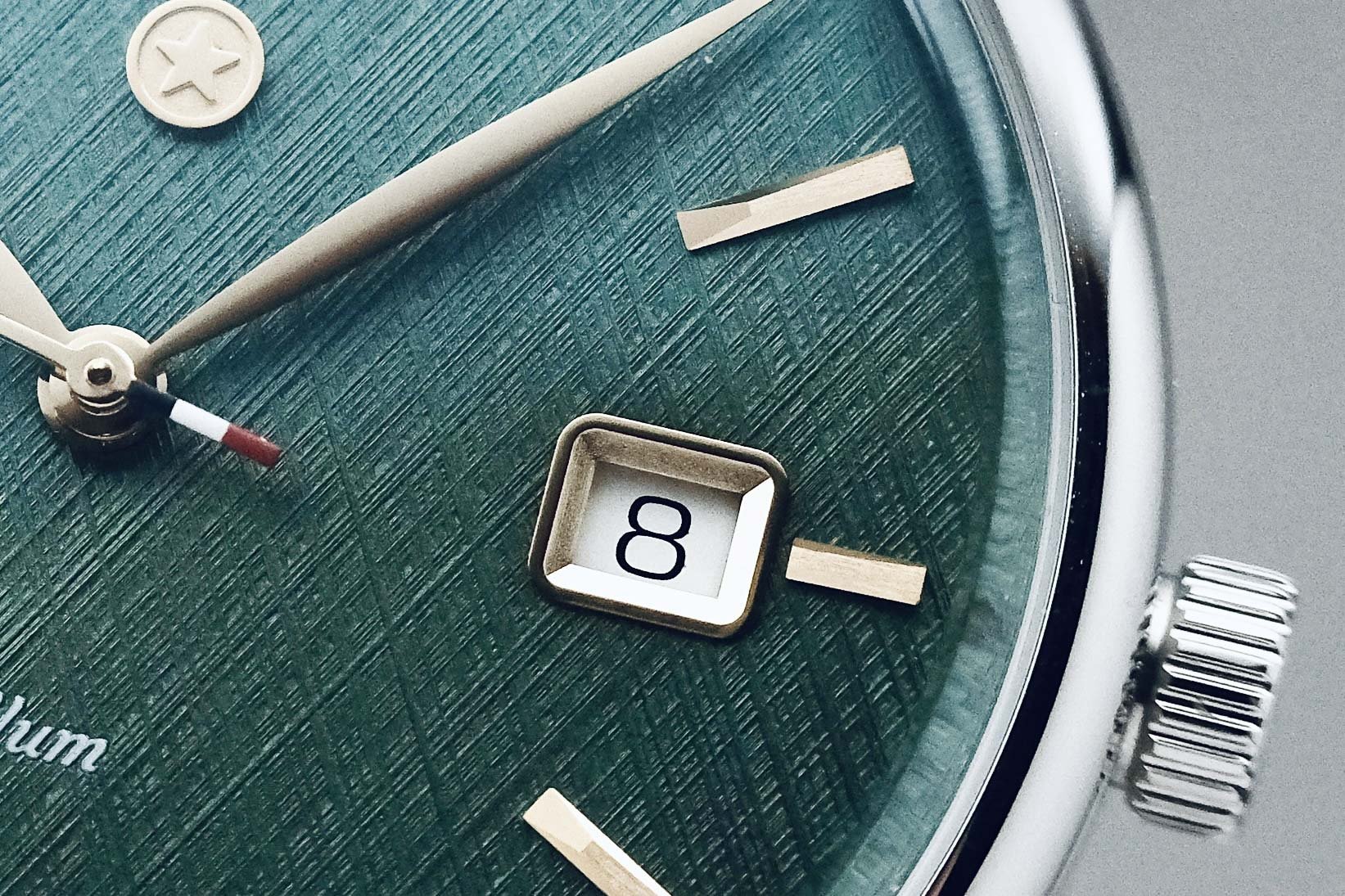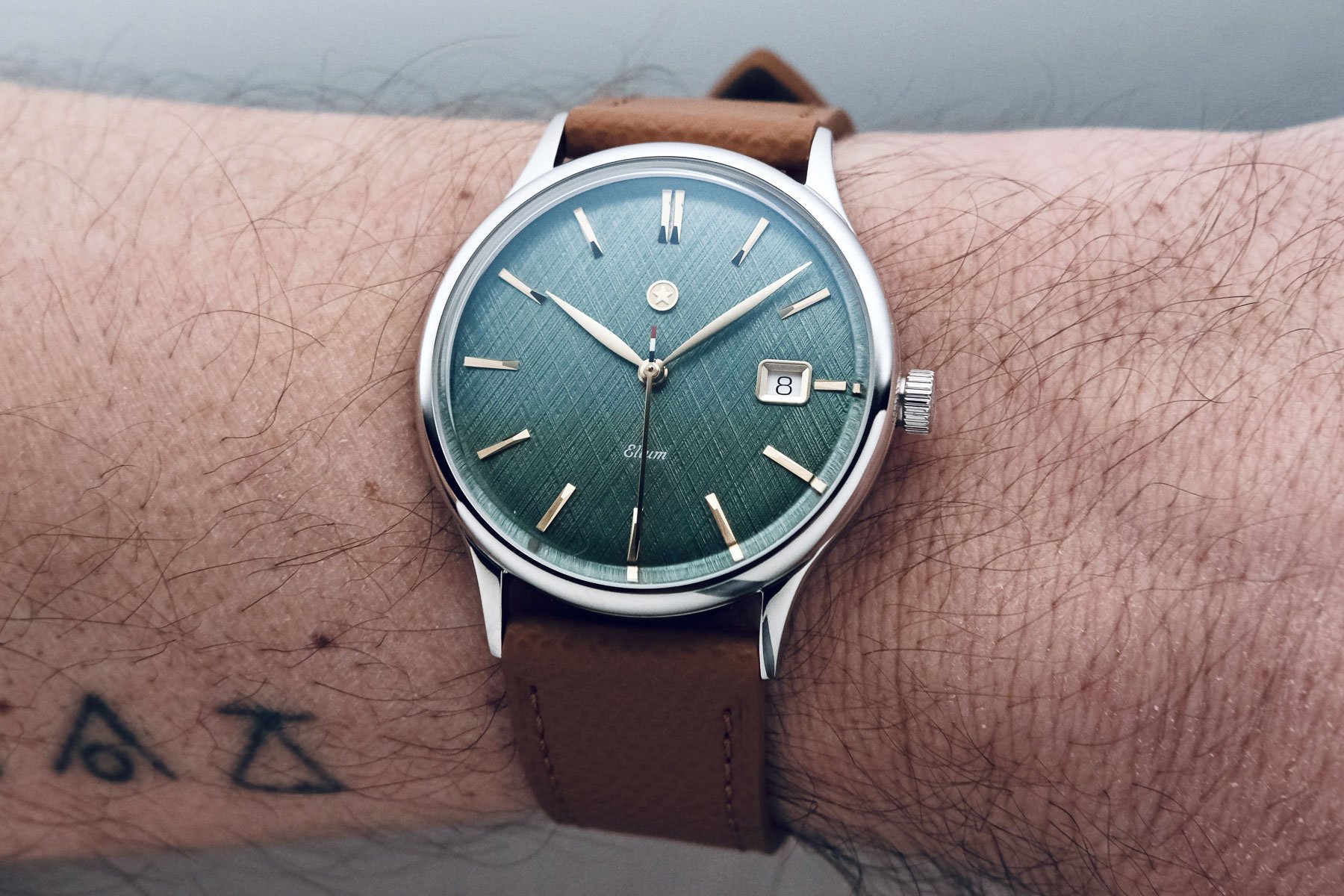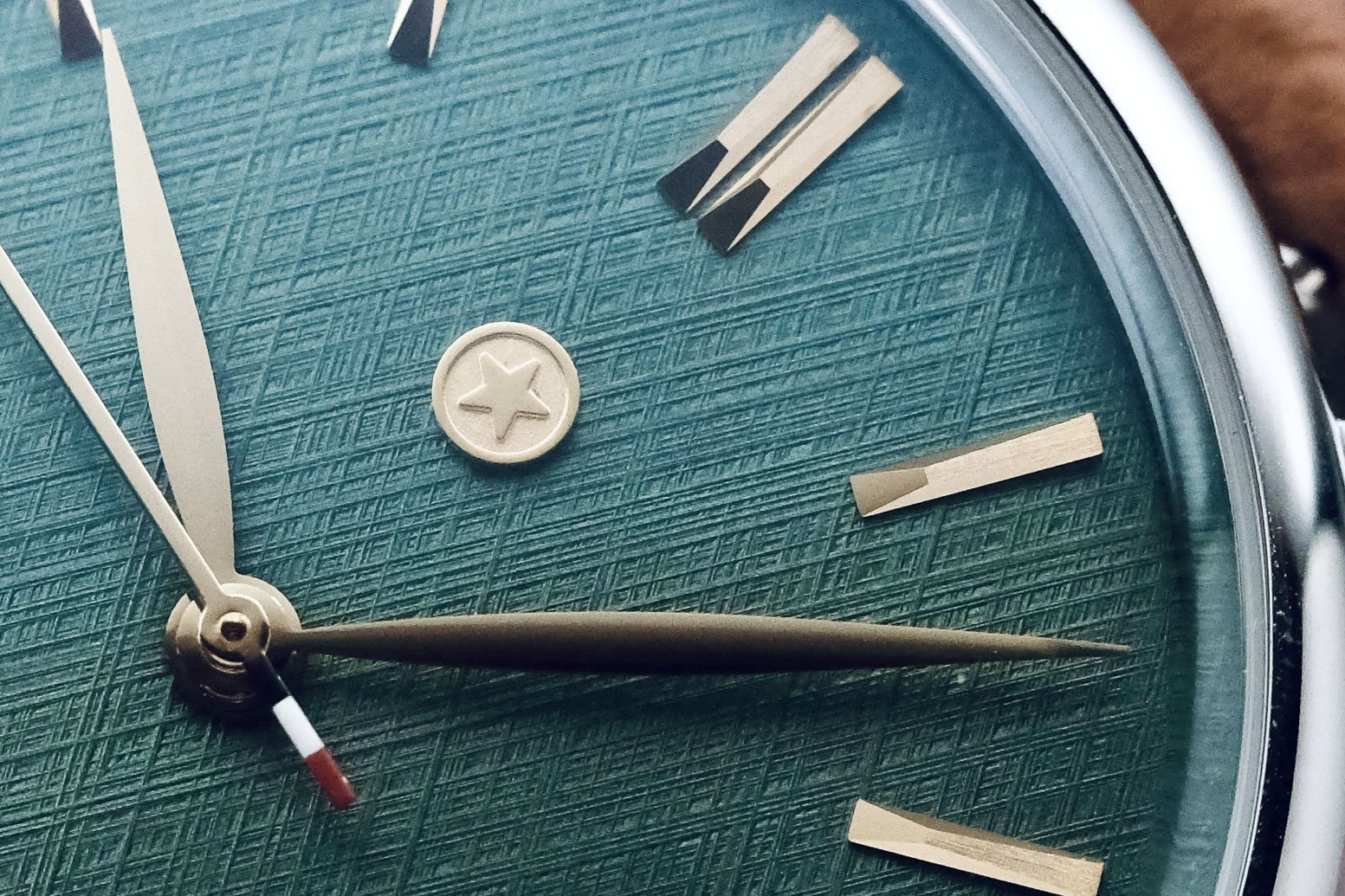Hands-On With The Jack Mason Ellum Manual Wind
When we look at the history of watchmaking over the past 150 years, we notice that most watches people wore were elegant (by today’s standards, that is). It wasn’t until the beginning of modern warfare in the early 20th century that watches became visually and mechanically utilitarian, with straightforward designs, better movements, and, generally speaking, better specs. The best example of this is the Rolex Explorer, often described as the quintessential versatile sports watch. However, a majority of watches today are geared towards being “tough” rather than “elegant,” especially when looking at the micro/independent market.
So we don’t often see indy brands take a stab at elegant horology, particularly at a different kind of elegance. This is why I’m thrilled to be telling you about the Jack Mason Ellum Manual Wind. You’re perhaps familiar with the Texan brand as I’ve written about its Strat-o-Timer and Hydrotimer in the past. Peter Cho, its founder, continuously works on refining the brand’s identity to make it more Texan and more distinct. And I would already argue that the Ellum Manual Wind perfectly exemplifies what Peter is trying to accomplish. This model walks a fine line between the new and the old, and I will let you decide in the comments if it’s “mission accomplished” for Peter.
Redefining (or not) what a dress watch is
I’ll try to be cautious here as what a certain genre of watch is and isn’t is mostly a subjective matter. But maybe we can agree on common characteristics dress watches are typically known to have. Yes, aesthetically they are “elegant” in the classic definition of the word, just as a JLC Master Control Ultra Thin or a Rolex Perpetual 1908 are elegant. What this typically comes down to are non-lumed, polished, and applied hour markers, barebones functionality, meager water resistance, and shiny bits. One can tell the time with an elegant watch but cannot take a stroll on the surface of the Moon. A dress watch looks “good” with a suit or evening gown but out of place paired with a T-shirt while cooking burgers on the weekend. Well, that’s some folks’ opinion, not mine.
But things change, and they don’t. Even though it is now accepted that sports watches with integrated bracelets can be elegant, we rarely put them in the “dress” category. Sporting a Rolex Submariner at the office is now normal, just like chopping wood with a Cartier Tank can be. However, a Submariner remains a tool watch and the Tank a dress watch. Therefore, I would argue that the Jack Masson Ellum Manual Wind is, in the traditional sense of the word, “dressy.” That’s what Peter was going for when redesigning the Ellum collection (you can see the old version here). He intended to create what could retrospectively become an “icon” of the brand. I know, these are lofty ambitions to have, and I hope that what follows will support this claim.
What makes the Jack Mason Ellum Manual Wind classic
Let’s take a closer look at the Ellum Manual Wind now that we’ve more or less established what a dress watch is. First of all, the dial is endowed with a classic layout. This includes polished and applied baton-style hour markers, leaf-shaped polished hands, and a framed date aperture at 3 o’clock. The date wheel does not match the dial color, and the numerals on it are black. Except for the date window, the dial of the Ellum Manual Wind is symmetrical. I particularly appreciate how long the hands are and how well they align with the hour markers. Furthermore, Peter opted for minimal branding, using the brand’s Texas Lone Star logo above the pinion and the model name in small white print below it. Thus, the Ellum Manual wind is legible and has a well-balanced dial, which are trademarks of dress watches.
The case further contributes to making the Ellum Manual Wind an elegant timekeeping device. It’s thin (9mm), fully polished, and equipped with a small push/pull crown. The lugs are short and narrow, and they make up the thin mid-case, which separates the fixed bezel from the see-through case back. In other words, the case of the Ellum Manual Wind is long and thin. In my humble opinion, this indeed makes this model rather elegant and classically dressy. I know that a majority of watches have round cases, but I find this one to be particularly round and to perfectly espouse the contours of the large dial combined with the long hands and applied hour markers.
Where Peter’s experience and creativity shine through
With all of that said, let’s now turn our attention to what makes the Jack Mason Ellum Manual Wind different. The star of the show here is the woven linen texture on the dial, which seems familiar and novel. It’s familiar because brands have been using this texture for decades, but it’s novel because of the way Jack Mason went about applying it. A machine etches lines of various weights and depths in different and somewhat random directions, making each dial unique. This texture also appears to be more or less intense depending on the lighting conditions. Moreover, I would argue that this pattern looks particularly interesting paired with this dial color (green) and the hands and markers. It pops!
The design of the applied hour markers I mentioned earlier has also been around for a long time. But here, they are perfectly executed, showing an interesting play on textures with the alternation of brushed tops and polished bevels. I also find that the slanted portions of the hour markers, pointing inward towards the center of the dial, add a little je ne sais quoi that subtly elevates the dial’s elegance. But what makes the Ellum Manual Wind entirely Texan and contemporary are the various nods to Peter’s home state. These include the Lone Star logo as well as the tricolor tail of the seconds hand (the colors of Texas).
In other words, I would argue that Peter managed to blend a time-tested type of watch design — a dress watch that generally adheres to strict design codes— with Jack Mason’s visual identity.
The specs of the Ellum Manual Wind
But all of the above won’t be as relevant to some of you if you don’t like this model’s full spec sheet. Dimensions-wise, the Ellum Manual Wind measures 38mm in diameter, 45mm long, 9mm thick, and 20mm between the lugs. Sapphire crystal adorns the top and bottom of the watch, and the case has a reasonable 50m water resistance rating. As you can see in the photos, the Swiss-made movement within is quite handsome. It’s the manual-winding Sellita SW210, which beats at a 28,800vph (4Hz) frequency and has a 42-hour power reserve. Jack Mason goes the extra mile by regulating the movements to run at ±5 seconds per day. Lastly, the Ellum Manual Wind is shipped on a brown Italian Epsom leather strap equipped with quick-release spring bars.
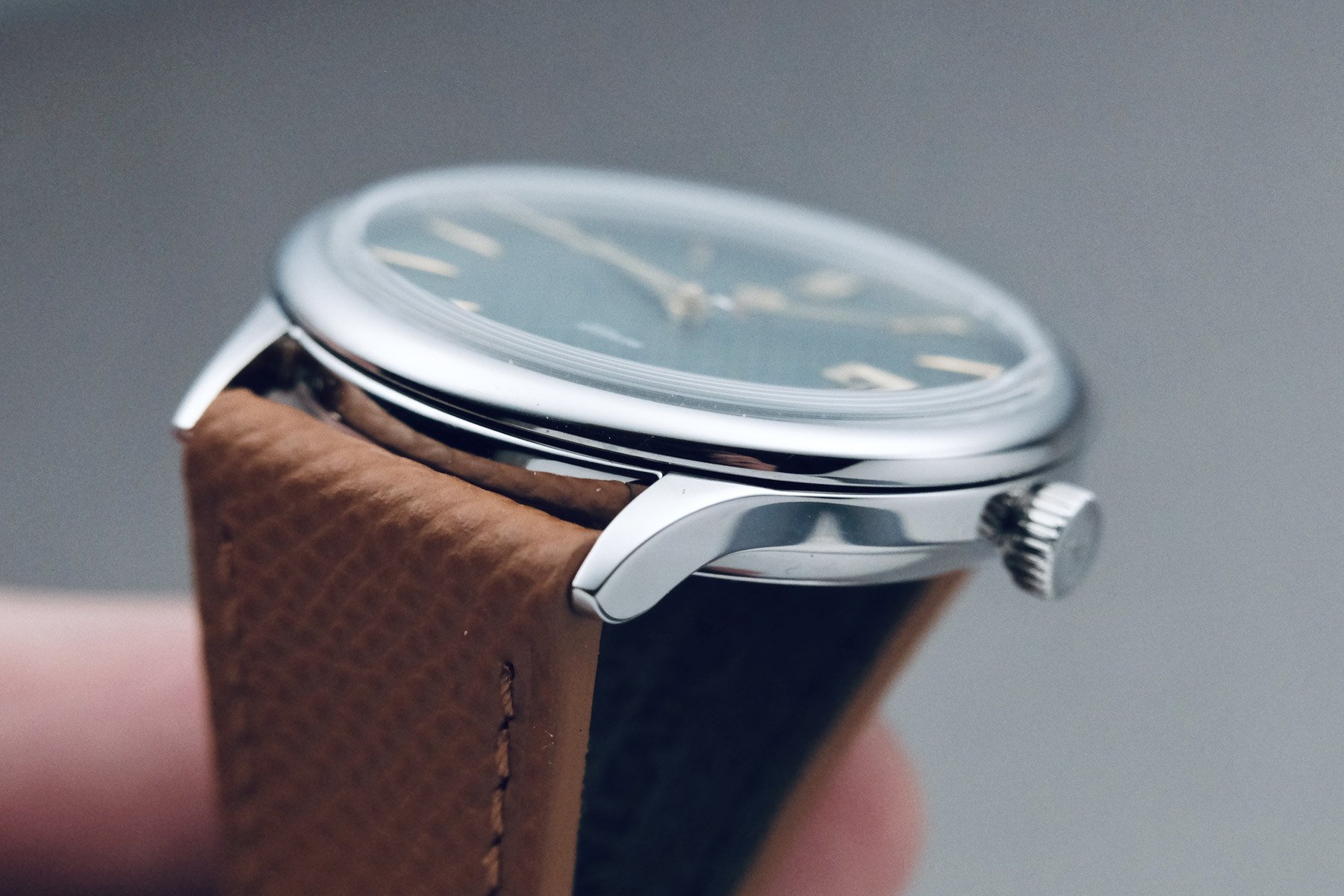
Conclusion
Well, what do you think of the Jack Mason Ellum Manual Wind? I know that we will agree on the fact that the brand has indeed created a contemporary-looking dress watch. It has a distinct charm and a respectable set of specifications, and I appreciate the dial texture, Texan identity, and good-looking movement. I hope you like the way it looks too. If you don’t, I understand that this type of watch and how Jack Mason/Peter approached this project may not be for everyone. I will leave you with a final bit of crucial information — the watch’s retail price of US$949.

